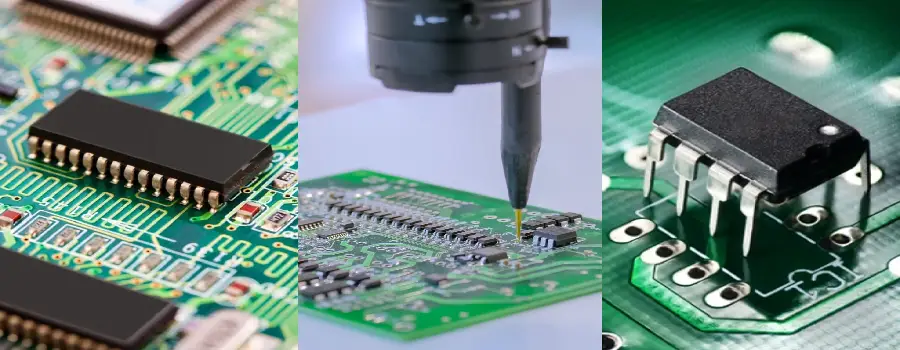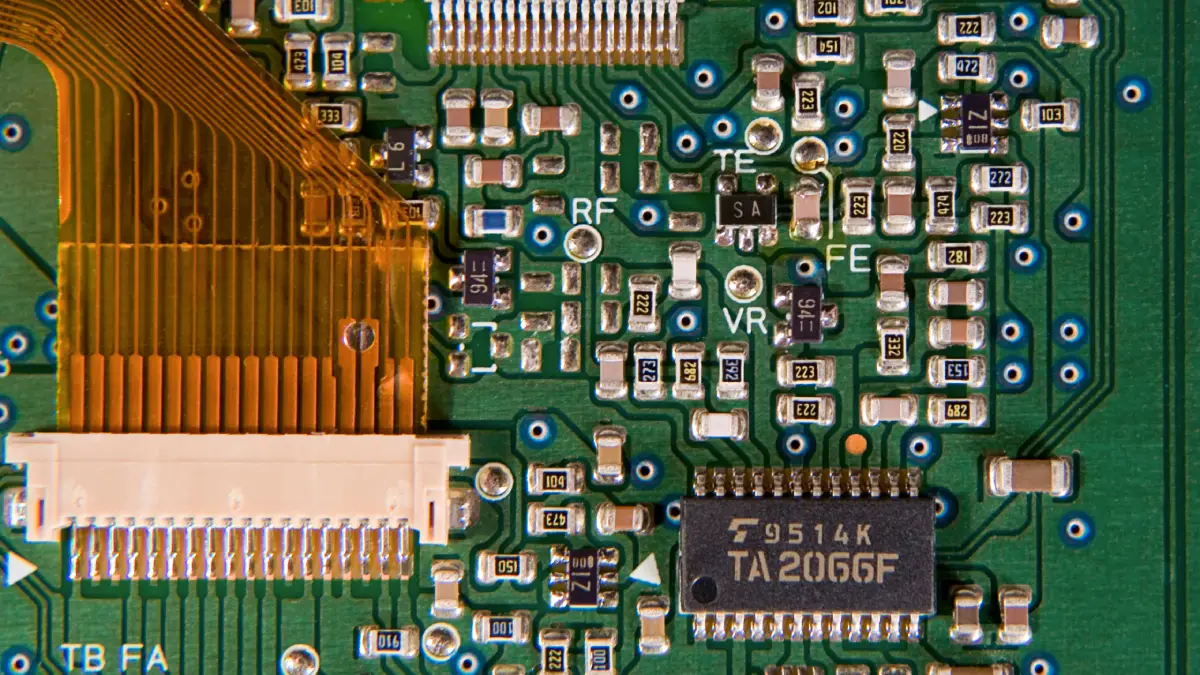
This article talks about the materials used in an MCPCB or metal core PCB. Let’s get started.
A metal core PCB or MCPCB is a specialized type of PCB that utilizes a base metal material, like aluminum or copper, as the core layer instead of the typical laminated FR4 material. The metal base offers improved thermal performance to help dissipate heat, making MCPCBs well-suited for high-power applications.
MCPCBs are commonly used when thermal management and heat dissipation are critical design factors. They are often found in LED lighting, power supplies, motor controls, and other devices where components can generate significant heat. The exposed metal on the underside of the PCB acts like a heat sink, allowing heat to spread effectively through the board and radiate away. This keeps components and solder joints cooler, improving system reliability.
While FR4-based PCBs can struggle with thermal conductivity, the metals used in MCPCBs have excellent thermal properties. Aluminum in particular offers thermal conductivities around 2000 times greater than standard FR4 laminate. This means MCPCBs can operate at higher power levels without overheating. The improved thermal performance enables smaller PCB sizes, higher component densities, and reduced thermal management costs.
MCPCBs provide a robust and efficient thermal management solution when applied appropriately.
What are the materials used in a metal core PCB?
Aluminum
Aluminum is the most commonly used metal core material in PCBs. It offers an excellent balance of performance, cost, and manufacturability.
The key advantages of aluminum include:
- Excellent thermal conductivity – Aluminum has a thermal conductivity of around 200 W/mK, much higher than standard FR4 which is around 0.25 W/mK. This allows aluminum PCBs to dissipate heat very effectively.
- Lightweight – Aluminum has a density of around 2.7 g/cm3, making aluminum PCBs much lighter than copper or steel alternatives. This helps reduce overall product weight.
- Cost effective – Aluminum is relatively inexpensive compared to other metals like copper or stainless steel. This makes aluminum a cost-efficient choice.
- Readily machinable – Aluminum can be readily machined and processed into thin cores using standard PCB fabrication techniques.
- Non-magnetic – Aluminum has low magnetic permeability, making it suitable for applications where minimal magnetic interference is required.
The most commonly used aluminum alloys for PCBs are Alloys 5052 and 6061. These offer a good balance of thermal, mechanical, and electrical properties. Overall, aluminum metal cores offer performance similar to copper at a lower cost and weight, making aluminum a popular choice for many demanding PCB applications.
Copper
The Copper is one of the most commonly used base metal materials in MCPCBs due to its high thermal conductivity. Copper has a thermal conductivity rating of 390 W/mK, making it significantly more effective at dissipating heat than traditional FR4 circuit boards.
The excellent thermal performance of copper helps to prevent issues like overheating, thermal expansion, and signal loss that can occur in high-power circuits. Copper’s thermal conductivity facilitates heat spreading across the PCB, allowing it to act like a functional heat sink. This is critical for managing the thermal profiles of high-current components.
Copper MCPCBs are fabricated with a dielectric layer separating the copper base from the traces and components. This allows the copper core to spread heat laterally without causing shorts. Popular dielectrics used with copper include resin-coated copper (RCC) and insulated metal substrates (IMS).
Copper offers ease of manufacture compared to some other PCB metals. It machines well, offering good dimensional stability for precision etching and the creation of complex board geometries. Copper can be plated to desired thicknesses to balance thermal performance and weight.
The excellent conductivity and machinability of copper make it a ubiquitous choice for metal core PCB constructions requiring superior thermal management and heat dissipation. It provides a robust, thermally conductive foundation for high-power and high-frequency applications.
Stainless Steel
Stainless steel is commonly used as the core material in a metal core PCB due to its excellent corrosion resistance and high stiffness. The most common grades used are 316 and 430 stainless steel.
316 stainless steel contains molybdenum which gives it increased corrosion resistance, making it suitable for more demanding environments. It has excellent resistance to a wide range of acids, alkalis, and chlorides. 316 retains its strength and durability in high temperatures, offering a high level of stiffness and preventing the PCB from bending or warping.
430 stainless steel lacks the molybdenum content but provides moderate corrosion resistance at a lower cost. It is sufficient for many general applications. While not as strong in extreme conditions, 430 stainless still provides excellent mechanical stiffness to support the PCB layers under thermal and physical stresses.
The desired material properties make stainless steel a popular choice for metal core boards used in harsh environments like industrial control, aerospace, and automotive. Its superior corrosion resistance allows it to withstand demanding conditions that would deteriorate cheaper metals. The high stiffness also lends itself well to large PCBs that require rigidity.

